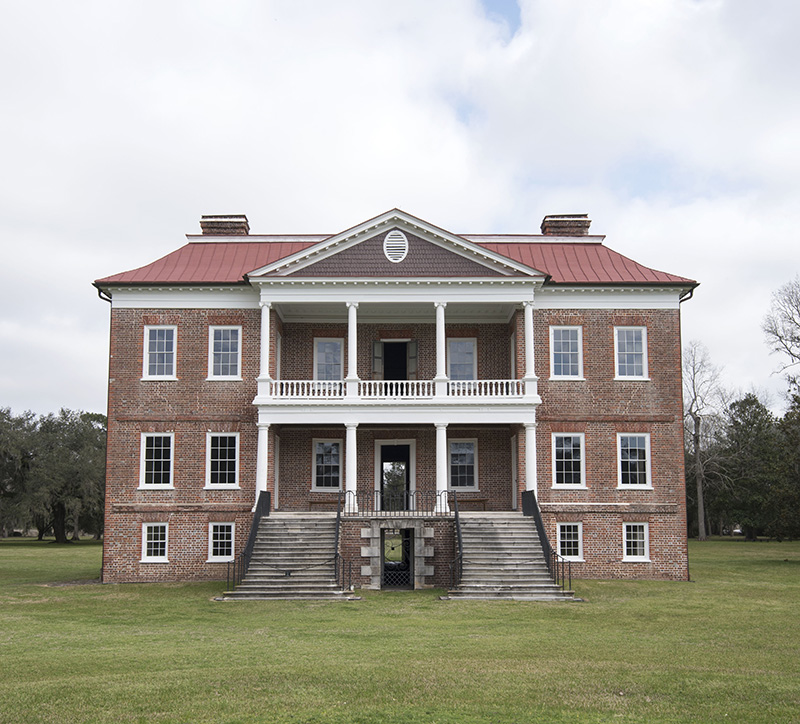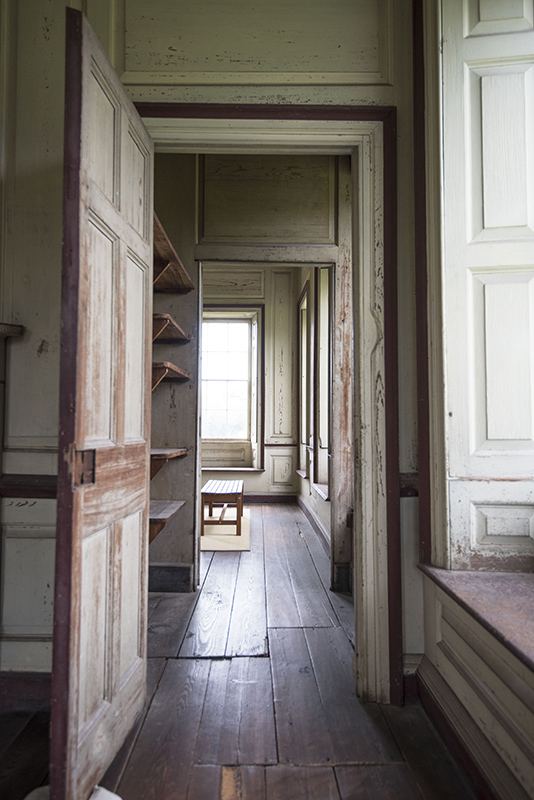Peopling Drayton Hall
by Amber Satterthwaite and Trish Smith
The two-day symposium “Exploring Race, Place & Identity through Low Country Collections,” co-presented by the Drayton Hall Preservation Trust (DHPT) and the Decorative Arts Trust, offered the opportunity to examine the interpretation and research of material culture from the perspective of race.
In our presentation “Peopling Drayton Hall: Life and Labor at a Palladian Villa,” we explored how enslaved people experienced Drayton Hall (figure 1) based on documentary evidence, archaeology, and concepts of Palladian architecture at use on the property.
Like all plantations, DHPT is an African American historic site. Using our research in the disciplines of architectural and social history, we discussed how Drayton Hall functioned as a slave house and how enslaved people lived and worked across the property.
For decades, researchers have studied Drayton Hall as a piece of material culture. John Drayton’s use of Palladian design principles when planning the grand estate demonstrate his commitment to formality and control. The architecture reinforces the concept of directing who had access to different areas of the home and landscape and how access was provided.
Since the house opened to the public, most tour experiences have focused on examining the architecture itself. Drayton Hall has become well-known as the first and finest example of Palladian architecture in the nation. But the remarkable architecture also exhibits the ways enslaved workers utilized key spaces. Passages, locked storage areas, work rooms behind closed doors, and a staircase tucked behind a corner are all testaments to the fact that Drayton Hall was not just a residence for one of colonial South Carolina’s wealthiest families, but home to an unknown number of enslaved people (figure 2). They were part of a larger community whose work was the foundation for the very power, wealth, and influence that Drayton Hall was meant to display, and we are determined to share their stories.
Ongoing multidisciplinary research has created new interpretive programs and paved the way for a new audio tour that embraces both social and architectural history, telling the stories of individuals by using Charles Drayton’s diaries (1784–1820) as well as the building itself. By analyzing the house, we learn how enslaved people moved through, worked, and lived in it, and adding personal stories from the diaries further enriches this understanding by imparting the names and experiences of these enslaved people
The new tour begins in the cellar, setting the tone for the rest of the main house experience and putting the focus immediately on enslaved laborers and how they used different areas of the building. Emphasizing social history and peopling Drayton Hall, the tour reveals new details about life there in the 18th and 19th centuries through various perspectives, filling the house with life once again. The architecture reminds the modern observer of the highly stratified class society in which everyone at Drayton Hall lived.
The creation of this new audio tour is just one of several ongoing projects focused on peopling Drayton Hall, all of which highlight not only our commitment to research and collaboration, but also the unique advantage we have in our unfurnished and unrestored house, which serves as an authentic and evocative backdrop that enables us to update and evolve our narrative as our understanding of the people who lived and worked in it grows.
Amber Satterthwaite and Trish Smith are the Curators of Education and Historic Architectural Resources respectively, at the Drayton Hall Preservation Trust in Charleston, SC.
A print version of this article was published in The Magazine of the Decorative Arts Trust, one of our most popular member benefits. Join today!


